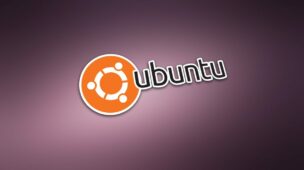
- ETCHER OS X 10.6.8 HOW TO
- ETCHER OS X 10.6.8 VERIFICATION
- ETCHER OS X 10.6.8 CODE
- ETCHER OS X 10.6.8 PC
- ETCHER OS X 10.6.8 MAC
So the OP should probably try the second method involving the use of the dd command.

User John Mark Harrell's answer confirms this is also true when using Big Sur on an unspecified Mac. The first method, which involves the Disk Utility application, failed to work when tested using macOS Catalina 10.15.7 on an iMac (21.5-inch, Late 2013) 2.9 GHz Quad-Core Intel Core i5.
ETCHER OS X 10.6.8 CODE
The many MB are not the result of bloated code but of choosing the Electron ‘platform’ resulting in giant binaries since including a browser and tons of crap: mac-tk:~ tk$ du -sh /Applications/balenaEtcher.app /Applications/balenaEtcher.app/Contents/Resources/app/node_modules /Applications/balenaEtcher.app/Contents/MacOS/balenaEtcher 315M /Applications/balenaEtcher.app 158M /Applications/balenaEtcher.app/Contents/Resources/app/node_modules 208K /Applications/balenaEtcher.app/Contents/MacOS/balenaEtcher 1234 mac-tk:~ tk$ du -sh /Applications/balenaEtcher.app /Applications/balenaEtcher.app/Contents/Resources/app/node_modules /Applications/balenaEtcher.app/Contents/MacOS/balenaEtcher 315M /Applications/balenaEtcher.app158M /Applications/balenaEtcher.app/Contents/Resources/app/node_modules208K /Applications/balenaEtcher.Creating a USB Flash Drive Installer from a Snow Leopard ISO Fileīelow are two methods. > That should tell you a lot about the code quality in the large one… Not really. > Seriously, 130+300MB is like 16000 times more code.
ETCHER OS X 10.6.8 HOW TO
You may also want to check out the user manual for more options including the ability to flash an image to a microcontroller over serial and to learn how to build the program from source. I have a 2TB USB 3.0 hard drive connected to my laptop, and USBImager correctly filtered it only showing smaller removable drives. So instead, I just flashed the uncompressed image and it worked nicely. Then I tried to flash an image compression with 7z. Nevermind I can always move the file later on, and the program did the job in about 33 minutes here. I select another directory before clicking on Read, but the program ignored this meaning files will be saved to the Desktop directory by default. This will create a bz2 compressed file save to the Desktop.
ETCHER OS X 10.6.8 PC
Let’s enlarge the window a bit, insert a MicroSD card in my PC taken from Raspberry Pi 4, and let’s try the Read function with Compress enabled. The user interface is really basic and simple with a browse file button, Write and Read buttons, a drop-down list to select a drive, and tick box to enable Verify and/or compress, buffer size selection from 1MB to 512MB, as well as a progress bar. The total size is a bit bigger since there are other files like the manpage and icons in the Debian package, but the total is still under 300KB. rwxr - xr - x 1 jaufranc jaufranc 249K Jun 21 20 : 47 / usr / bin / usbimager It looks great, so I’ve tried the latest version on Ubuntu 20.04:
ETCHER OS X 10.6.8 MAC
You’ll find the source code, and binary image for Windows, Linux, Mac OS, and Raspberry Pi on Gitlab.

The table below compares USBImager to balenaEtcher and Win32DIskImager program. USBImager is open source (MIT license), takes around 256KB of storage space, support verification, compressed files (gz, bz2, xz, zip), etc…. But commenters pointed out there are now better tools including USBImager, a lightweight cross-platform tool with many of the same features as balenaEtcher.

However, the binary is rather large at around 130 MB, and the company started to show sponsors to fund the development of the program, and this was not to the liking of everyone.ĭuring my review of CrowPi2 Raspberry Pi 4 laptop, I encountered an issue with balenaEtcher, which was quickly fixed once I updated the program to the latest version.
ETCHER OS X 10.6.8 VERIFICATION
It’s easy to use and does verification after flashing. So Etcher, now called balenaEtcher, became a popular cross-operating systems tool to flash images for Raspberry Pi and other SBCs.

But you could potentially damage your system with a wrong command, it will not do verification after writing the firmware image, and it was not available in Windows, so people had to use Win32DiskImager, and last time I check it did not do verification either. The common way to flash OS images to SD cards used to be “dd”.


 0 kommentar(er)
0 kommentar(er)
